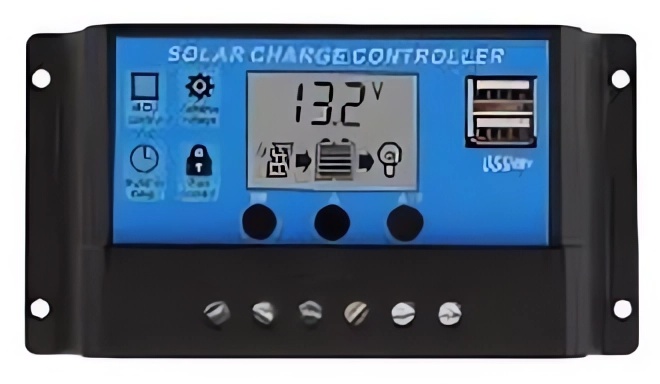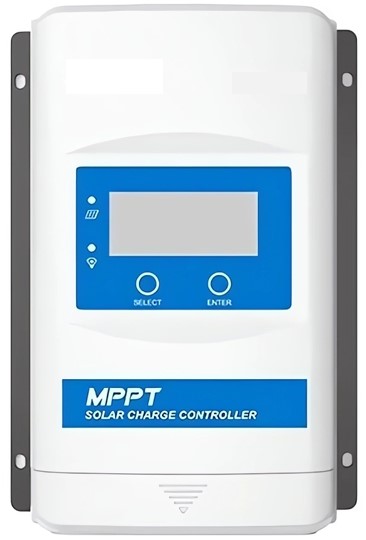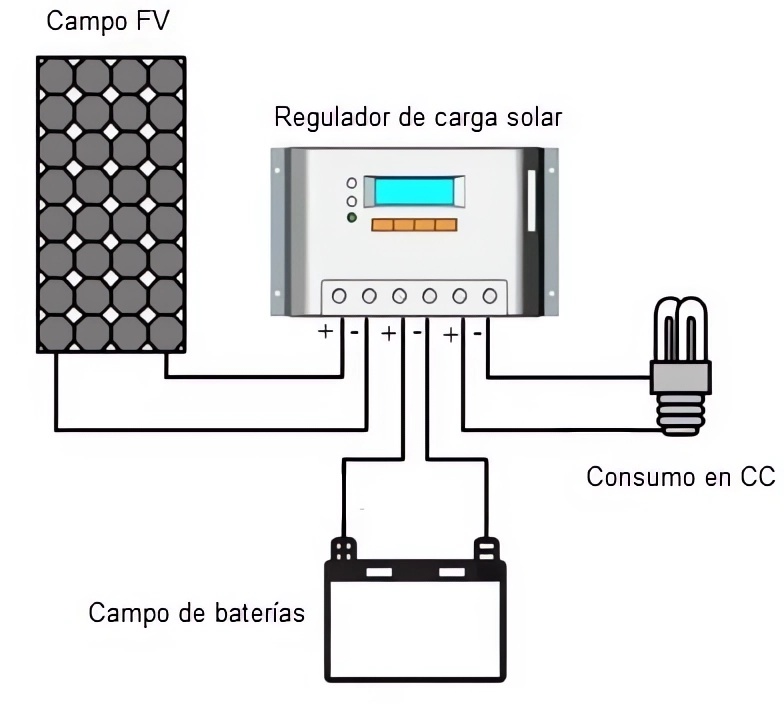The solar charge controller, also known as a solar charge regulator, is a crucial element in solar power systems. It ensures that energy flows efficiently between batteries and solar panels.
It controls and monitors battery charging and discharging, optimizing their performance and extending their lifespan.
There are two types of solar regulators based on their operating technology: Maximum Power Point Tracking (MPPT) and Pulse-Width Modulation (PWM) controllers.
Below, we explain the characteristics of each type and their applications.
Pulse-width modulation (PWM) solar charge controller

The PWM solar charge controller is the simplest and most basic equipment used in photovoltaic systems, making it a popular choice due to its cost-effectiveness. Its operation is based on pulse-width modulation, which means it maintains the voltage flow to the battery in a pulsating manner.
In this way, it reduces the energy flow to the battery as it approaches its optimal charge level. This prevents overcharging while acting as a protector against harmful deep discharges.
Its use is limited to low-power solar energy systems (up to 2000 W). One drawback is that the efficiency of this device decreases when the voltage of the solar panel is much higher than that of the batteries.
Solar charge controller with maximum power point tracking or MPPT

The MPPT technology for a solar charge controller is the most efficient and advanced. In its operation, it maintains the maximum power point of the solar panels.
This equipment optimizes the use of the amount of energy stored in the batteries. Additionally, it protects them against overcharging and deep discharges that could damage them.
What benefits do the different types of solar charge controllers provide?
The benefits of the solar charge controller are manifold; here, we mention the most important ones.
Protects the system and maintains its performance
In addition to what was mentioned earlier, it protects all system components as well as the batteries.
To do this, it acts as insurance to prevent any voltage that could damage the system and reduce its performance, for any reason.
Furthermore, it acts as a reverse polarity diode, preventing the flow of current from the battery to the solar panels when they are not generating power. This function also prevents damage and discharge of the batteries.
It increases the energy efficiency of the photovoltaic system
By exerting greater control over the charging and discharging of the batteries, they improve the efficiency of the system as a whole and increase overall performance.
Increased independence from the conventional electrical grid
This is due to its ability to optimize solar energy capture and make its storage highly effective. By achieving better battery charging, the photovoltaic system provides uninterrupted electricity.
Extends the lifespan of the batteries
By regulating the discharge and recharge at appropriate levels, the solar charge controller prevents stressful events such. As overloads, overvoltages, continuous and deep discharges, among others.
This makes the batteries last much longer, avoiding frequent replacements and reducing costs.
To learn more about this equipment in detail, we invite you to read the post The solar charge controller: what it is and how it works.
You can find it on the energydcac blog, where there is also a lot of interesting content. Don’t forget to visit us!
Finally, with this information, you will know how to choose the best solar charge controller according to your needs.

